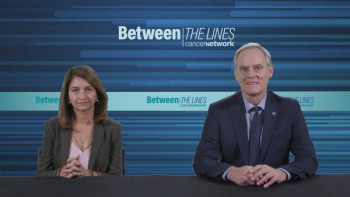
Stage 1 – Increasing Pulmonologist Awareness About Radiation Oncology
Panelists discuss how radiation oncologists can increase pulmonologist awareness about radiation therapy through multidisciplinary collaboration, educating colleagues about modern treatment capabilities, engaging them in fiducial placement and toxicity management, and positioning radiation oncology as both an upstream and downstream service that can help solve pulmonologists’ clinical challenges.
Episodes in this series

Stage I: Increasing Pulmonologist Awareness About Radiation Oncology
Pulmonologists increasingly participate in multidisciplinary tumor boards and provide systemic lymph node staging, positioning them as frontline physicians who often first inform patients of lung cancer diagnoses. However, many pulmonologists have limited understanding of modern radiation oncology capabilities and processes. Effective strategies for increasing awareness include engaging pulmonologists in fiducial marker placement during biopsy procedures and involving them in managing treatment-related adverse effects like pneumonitis. These touchpoints create opportunities for education about radiation oncology’s sophisticated treatment planning and delivery processes, demonstrating the field’s complexity beyond simply “turning on the beam.”
Building collaborative relationships requires active outreach, including inviting pulmonologists to observe radiation oncology departments firsthand. Many colleagues are impressed when witnessing the multiple steps involved in simulation, treatment planning, and delivery. Educating pulmonologists about the importance of obtaining adequate tissue for molecular testing, particularly for EGFR mutations, helps optimize patient staging and treatment selection. The VALOR trial serves as a model by positioning pulmonologists as central gatekeepers who can refer patients to both surgery and radiation oncology simultaneously when lung function is borderline, avoiding stacked delays in care.
Radiation oncologists must recognize their role as educators within multidisciplinary teams, as most medical professionals have never rotated through radiation oncology during training. Demonstrating advances in treatment delivery over the past 20 years—similar to how surgery and medical oncology have evolved—helps colleagues understand modern capabilities. Additionally, radiation oncologists can provide value beyond being a “downstream service” by following patients long-term, detecting second primaries, and referring back to pulmonology for biopsy when needed. Extending awareness efforts to primary care physicians and internists who control lung cancer screening referrals represents an even broader opportunity for education about curative radiation options.
Newsletter
Stay up to date on recent advances in the multidisciplinary approach to cancer.















































































